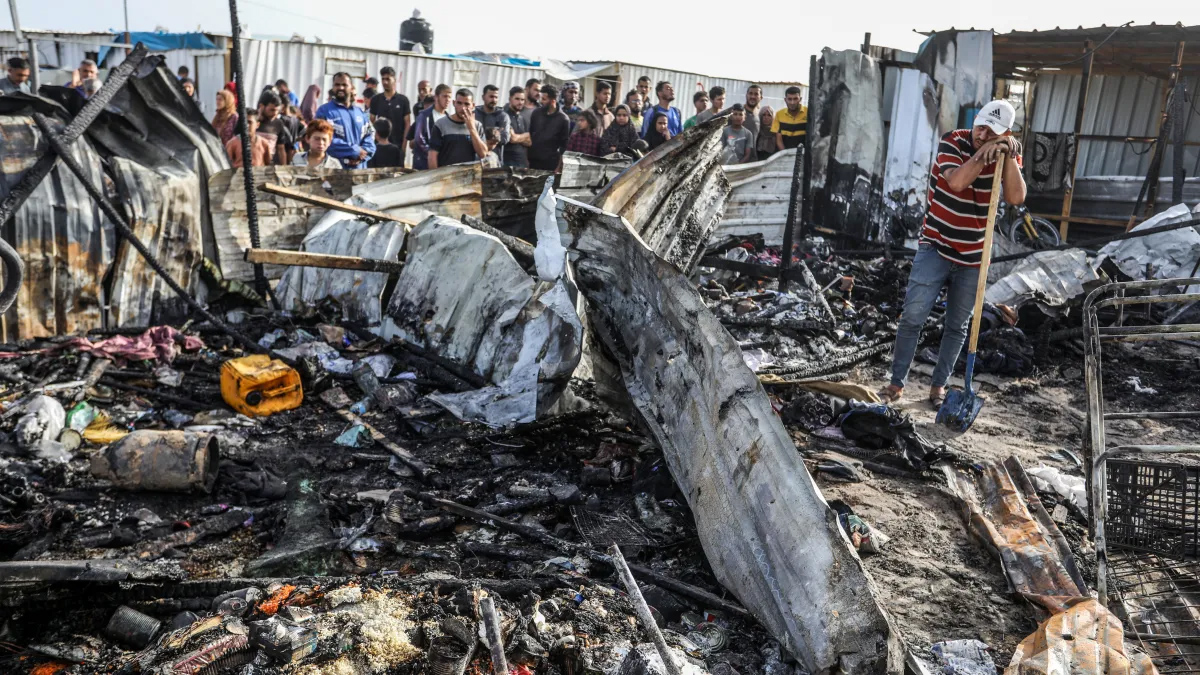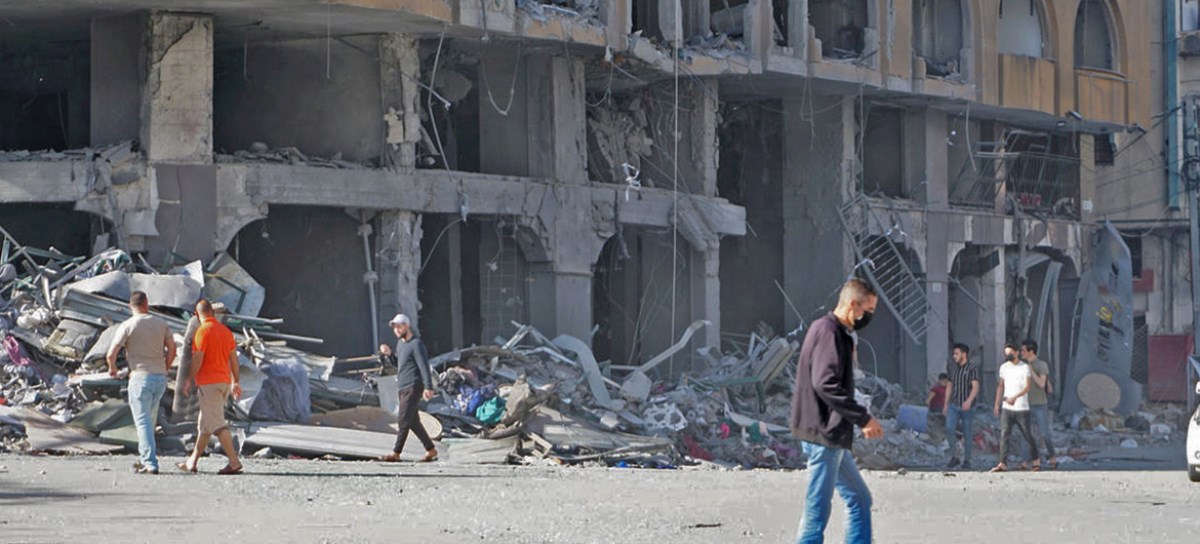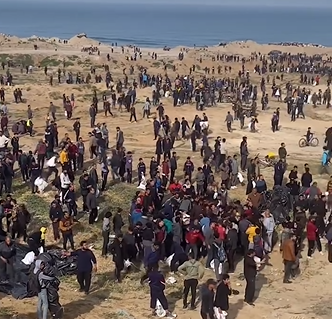Israeli shelling and airstrikes on the tents of displaced Palestinians outside the southern Gaza city of Rafah
 KRC TIMES National Bureau
KRC TIMES National Bureau

Israeli shelling and airstrikes on the tents of displaced Palestinians outside the southern Gaza city of Rafah on Tuesday, killed at least 37 people. Israel has pummeled the same area where strikes on a camp for displaced Palestinians had triggered a deadly fire days earlier, which claimed the lives of more than 45 people, most of them women and children. The area was notified by Israel as a “safe zone” for displaced Palestinians to move into.
The “massacre” of Palestinians in the tent camp has drawn widespread international outrage, including from some of Israel’s closest allies. And in a sign of Israel’s growing isolation on the world stage, Spain, Norway and Ireland formally recognized a Palestinian state on Tuesday.
The International Court of Justice ordered Israel to halt its Rafah offensive last week as part of South Africa’s case accusing Israel of committing genocide against the Palestinians in Gaza.
Israeli Prime Minister Benjamin Netanyahu said the fire was the result of a “tragic mishap.”
Palestinians transport the bodies of their relatives killed in an Israeli bombardment where displaced people were staying in Rafah, Gaza Strip, Tuesday, May 28, 2024.
The Israeli military later came out with a justification claiming that the fire at the camp had been caused by secondary explosions, possibly from Palestinian militants’ weapons. Israeli military spokesman Rear Adm. Daniel Hagari said the cause of the fire was still under investigation and claimed that the Israeli munitions used — targeting what the army said was a position with two senior Hamas militants — “were too small to be the source.”
The military also released satellite photos of what it said was a Hamas rocket launch position about 40 meters (yards) from an area of sheds that was targeted. In the photo, the alleged launcher itself did not appear to have been struck.
He claimed Israeli warplanes used the “smallest bombs possible” — two munitions with 17-kilogram (37-pound) warheads. “Our munition alone could not have ignited a fire of this size,” he said.
Israel’s assault on Rafah, launched May 6, spurred more than 1 million people to flee the city, the U.N. agency helping Palestinian refugees said Tuesday. Most were already displaced multiple times in Israel’s eight-month-long war against Gaza. Families are now scattered across makeshift tent camps and other war-ravaged areas.
The strikes over the past few days have hit areas west of Rafah. Israeli ground troops and tanks have been operating in eastern Rafah, in central parts of the city, and along the Gaza-Egypt border.
The strikes have triggered a flight of people from areas west of Rafah. Sayed al-Masri, a Rafah resident, said many families were heading to the crowded Muwasi area or to Khan Younis, a southern city that suffered heavy damage during months of fighting.
Shelling late Monday and early Tuesday hit Rafah’s western Tel al-Sultan district, killing at least 16 people, the Palestinian Civil Defense and the Palestinian Red Crescent said. Seven of the dead were in tents next to a U.N. facility about about 200 meters (yards) from the site of Sunday’s fire.
“It was a night of horror,” said Abdel-Rahman Abu Ismail, a Palestinian from Gaza City who has been sheltering in Tel al-Sultan since December. He said he heard “constant sounds” of explosions overnight and into Tuesday, with fighter jets and drones flying above.
He said it reminded him of the Israeli invasion of his neighbourhood of Shijaiyah in Gaza City, where Israel launched a heavy bombing campaign before sending in ground forces in late 2023. “We have seen this before,” he said.
The United States and other allies of Israel have warned against a full-fledged offensive in the city, with the Biden administration saying this would cross a “red line” and refusing to provide offensive arms for such an undertaking.
On Tuesday, U.S. State Department spokesman Matthew Miller gave no indication the administration sees Israel as crossing any of the red lines for Rafah, saying the offensive is still on a “far different” scale than assaults on other population centres in Gaza.
A proposed U.N. Security Council resolution demanding a halt to the fighting in Rafah was being circulated by Algeria on Tuesday, with plans to potentially bring it to a vote this week. The U.S. has vetoed multiple Gaza cease-fire resolutions.
On Tuesday afternoon, an Israeli drone strike hit tents near a field hospital by the Mediterranean coast west of Rafah, killing at least 21 people, including 13 women, Gaza’s Health Ministry said.
A witness, Ahmed Nassar, said his four cousins and some of their husbands and children were killed in the strike and a number of tents were destroyed or damaged. Most of those living there had fled from the same neighbourhood in Gaza City earlier in the war.
“They have nothing to do with anything,” he said.
Gaza’s Health Ministry said two medical facilities in Tel al-Sultan are out of service because of intense bombing nearby. Medical Aid for Palestinians, a charity operating throughout the territory, said the Tel al-Sultan medical center and the Indonesian Field Hospital were under lockdown with medics, patients and displaced people trapped inside.
Most of Gaza’s hospitals are no longer functioning. Rafah’s Kuwait Hospital shut down Monday after a strike near its entrance killed two health workers.
A spokesperson for the World Health Organization said the casualties from Sunday’s strike and fire “absolutely overwhelmed” field hospitals in the area, which were already running short on supplies to treat severe burns.
“That requires intensive care, that requires electricity, that requires high-level medical services,” Dr. Margaret Harris told reporters in Geneva. “Increasingly, we are struggling to even have the high-level skilled doctors and nurses because they’ve been displaced.”
Israel’s brutal war in Gaza has killed at least 36,096 Palestinians, according to Gaza’s Health Ministry, most of them women and children. Around 80% of Gaza’s population of 2.3 million has been displaced and U.N. officials say the territory is under the threat of famine.
The fighting in Rafah has made it nearly impossible for humanitarian groups to import and distribute aid to southern Gaza. Aid groups say it’s extremely difficult to access whatever aid is allowed in because of the frequent airstrikes.
The U.N. says it has only been able to collect aid from around 170 trucks over the past three weeks via Kerem Shalom. Smaller amounts of aid were also entering through two crossings in the north and by sea through a U.S.-built floating pier, but it’s nowhere near the 600 trucks a day that aid groups say are needed. And the pier is being removed for repairs.
Promotional | Subscribe KRC TIMES e-copy






